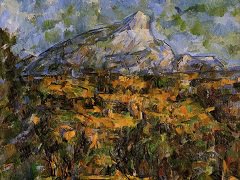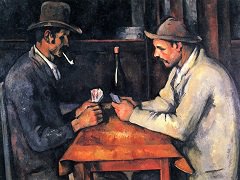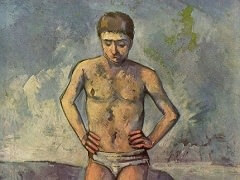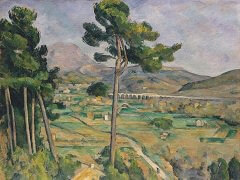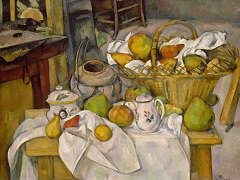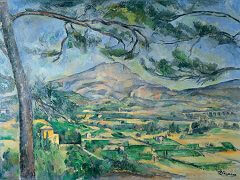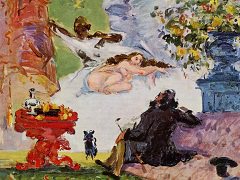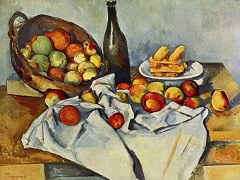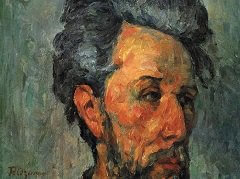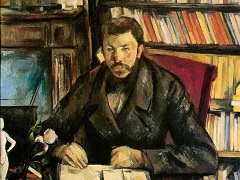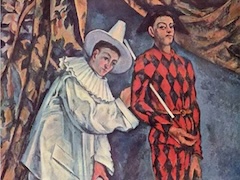The House with the Cracked Walls, 1892 - by Paul Cezanne
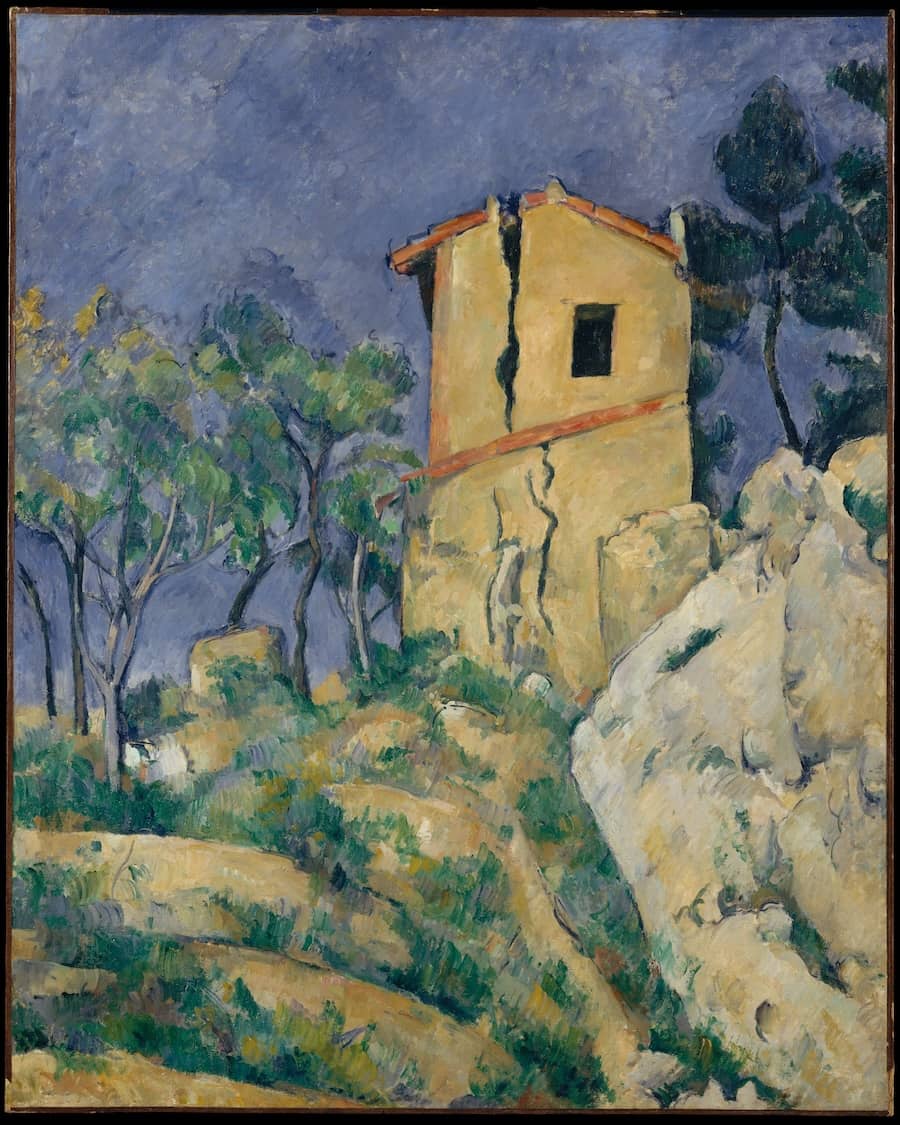
A romantic picture, a hermit's vision of heat, solitude, and ruin in nature - a space for the Saint Anthony of Cezanne's youthful imagination. The verticality of the picture, the upward tilted ground without perspective lines, create a strange world: everything is close to us, we are shut in by the intense empty sky, the irregular horizon, the steep and unstable ground, the ruined house.
It is an effect of intimacy and strain, of restlessness and quiet. The theme of the cracked wall is carried through the landscape; the black lines of the cracks reappear in the forms of the tree trunks, in a path on the ground, and in the markings of the rocks. The one human object, the house, set in the fork between earth and rock, rests on a point, like the agitated trees, and repeats their branching form. The lines of the building, accented by the red tiles, are adjusted to the slope of the ground. There are fine decisions in the play of horizontals and diagonals throughout. The dark window, so starkly set in the hexagon of the wall, is no isolated shape; it is tied to the ground through two similar massive rocks.


